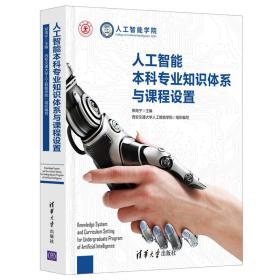
数据库系统概念 (英文精编版·原书第7版)
¥ 48.65 3.5折 ¥ 139 全新
仅1件
北京通州
认证卖家担保交易快速发货售后保障
作者[美]亚伯拉罕·西尔伯沙茨;[美]亨利·F. 科思;[印]S. 苏达尔尚
出版社机械工业出版社
出版时间2021-10
版次1
装帧其他
上书时间2024-12-26
- 最新上架
商品详情
- 品相描述:全新
图书标准信息
- 作者 [美]亚伯拉罕·西尔伯沙茨;[美]亨利·F. 科思;[印]S. 苏达尔尚
- 出版社 机械工业出版社
- 出版时间 2021-10
- 版次 1
- ISBN 9787111692218
- 定价 139.00元
- 装帧 其他
- 开本 16开
- 纸张 胶版纸
- 页数 740页
- 字数 350千字
- 【内容简介】
- 《数据库系统概念》是数据库系统方面的经典教材之一,其内容由浅入深,既包含数据库系统基本概念,又反映数据库技术新进展。本书基于该书第7版进行改编,保留其中的基本内容,压缩或删除了一些高级内容,更加适合作为国内高校计算机及相关专业本科生数据库双语课程教材。
- 【作者简介】
-
亚伯拉罕·西尔伯沙茨
(Abraham Silberschatz)
于纽约州立大学石溪分校获得博士学位,现为耶鲁大学计算机科学系Sidney J. Weinberg教授,曾任贝尔实验室信息科学研究中心副主任。他是ACM会士、IEEE 会士以及康涅狄格科学与工程学会的成员,获得了48项专利和24项授权。他还是教科书《操作系统概念》的作者。
亨利·F. 科思
(Henry F. Korth)
于普林斯顿大学获得博士学位,现为理海大学计算机科学与工程系教授和计算机科学与商业项目联合主任,曾任贝尔实验室数据库原理研究中心主任、松下科技副总裁、得克萨斯大学奥斯汀分校副教授以及IBM研究中心研究人员。他是ACM会士、IEEE会士以及VLDB会议10年贡献奖的获得者。他的研究涉及数据库系统的方方面面,近,他的研究致力于解决区块链在企业数据库中的应用问题。
S. 苏达尔尚
(S. Sudarshan)
于威斯康星大学获得博士学位,现为印度理工学院孟买校区Subrao M. Nilekani讲席教授,曾为贝尔实验室技术人员。他是ACM会士,发表了100余篇论文并获得15项专利。他目前的研究领域包括SQL查询的测试和分级、通过重写命令式代码来优化数据库应用程序,以及并行数据库的查询优化。 - 【目录】
-
Chapter 1 Introduction 1
1.1 Database-System Applications1
1.2 Purpose of Database Systems5
1.3 View of Data8
1.3.1 Data Models8
1.3.2 Relational Data Model9
1.3.3 Data Abstraction9
1.3.4 Instances and Schemas12
1.4 Database Languages 13
1.4.1 Data-Definition Language 13
1.4.2 The SQL Data-Definition Language 14
1.4.3 Data-Manipulation Language 15
1.4.4 The SQL Data-Manipulation Language 16
1.4.5 Database Access from Application Programs 16
1.5 Database Design 17
1.6 Database Engine 18
1.6.1 Storage Manager 19
1.6.2 The Query Processor 20
1.6.3 Transaction Management 20
1.7 Database and Application Architecture 21
1.8 Database Users and Administrators 23
1.8.1 Database Users and User Interfaces 24
1.8.2 Database Administrator 24
1.9 History of Database Systems 25
1.10 Summary 29
Review Terms 30
Practice Exercises 31
Exercises 32
Tools 33
Further Reading 33
Bibliography 33
PART 1 RELATIONAL LANGUAGES
Chapter 2 Introduction to the Relational Model 37
2.1 Structure of Relational Databases37
2.2 Database Schema41
2.3 Keys43
2.4 Schema Diagrams46
2.5 Relational Query Languages47
2.6 Summary48
Review Terms49
Practice Exercises49
Exercises50
Further Reading51
Bibliography51
Chapter 3 Introduction to SQL 53
3.1 Overview of the SQL Query Language53
3.2 SQL Data Definition54
3.2.1 Basic Types55
3.2.2 Basic Schema Definition 56
3.3 Basic Structure of SQL Queries 59
3.3.1 Queries on a Single Relation 59
3.3.2 Queries on Multiple Relations 62
3.4 Additional Basic Operations 67
3.4.1 The Rename Operation 67
3.4.2 String Operations 70
3.4.3 Attribute Specification in the Select Clause 71
3.4.4 Ordering the Display of Tuples 71
3.4.5 Where-Clause Predicates 72
3.5 Set Operations 73
3.5.1 The Union Operation 74
3.5.2 The Intersect Operation 75
3.5.3 The Except Operation 76
3.6 Null Values 77
3.7 Aggregate Functions 79
3.7.1 Basic Aggregation 79
3.7.2 Aggregation with Grouping 80
3.7.3 The Having Clause 83
3.7.4 Aggregation with Null and Boolean Values 84
3.8 Nested Subqueries 86
3.8.1 Set Membership 86
3.8.2 Set Comparison 87
3.8.3 Test for Empty Relations 89
3.8.4 Test for the Absence of Duplicate Tuples 91
3.8.5 Subqueries in the From Clause 92
3.8.6 The With Clause 93
3.8.7 Scalar Subqueries 94
3.8.8 Scalar Without a From Clause 95
3.9 Modification of the Database 96
3.9.1 Deletion 96
3.9.2 Insertion 98
3.9.3 Updates 99
3.10 Summary 102
Review Terms 103
Practice Exercises 103
Exercises 107
Tools 111
Further Reading 112
Bibliography 112
Chapter 4 Intermediate SQL 113
4.1 Join Expressions113
4.1.1 The Natural Join114
4.1.2 Join Conditions118
4.1.3 Outer Joins119
4.1.4 Join Types and Conditions124
4.2 Views125
4.2.1 View Definition126
4.2.2 Using Views in SQL Queries126
4.2.3 Materialized Views128
4.2.4 Update of a View128
4.3 Transactions131
4.4 Integrity Constraints133
4.4.1 Constraints on a Single Relation134
4.4.2 Not Null Constraint134
4.4.3 Unique Constraint135
4.4.4 The Check Clause135
4.4.5 Referential Integrity137
4.4.6 Assigning Names to Constraints139
4.4.7 Integrity Constraint Violation During a Transaction139
4.4.8 Complex Check Conditions and Assertions 140
4.5 SQL Data Types and Schemas 141
4.5.1 Date and Time Types in SQL 142
4.5.2 Type Conversion and Formatting Functions 143
4.5.3 Default Values 144
4.5.4 Large-Object Types 144
4.5.5 User-Defined Types 146
4.5.6 Generating Unique Key Values 148
4.5.7 Create Table Extensions 150
4.5.8 Schemas, Catalogs, and Environments 150
4.6 Index Definition in SQL 152
4.7 Authorization 153
4.7.1 Granting and Revoking of Privile
点击展开
点击收起
— 没有更多了 —












以下为对购买帮助不大的评价